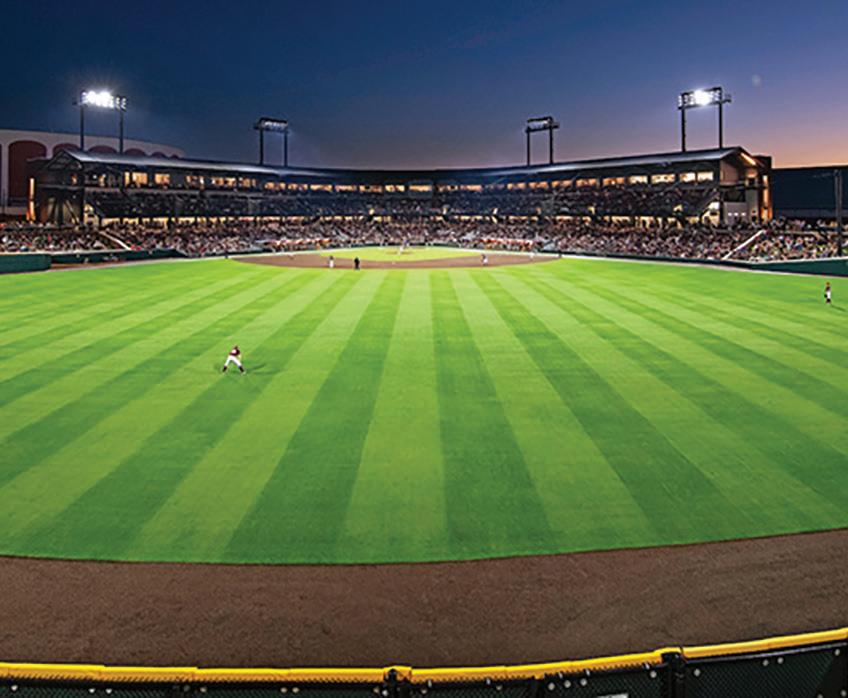

























ummer Solstice. A day I look forward to every year. We may be past the solstice, but there are still plenty of dog days of summer remaining here in Tennessee. Warm weather, growing season, renovations, & vacations are a few things that come to mind. A big one for me in the turf industry is summer help. They may get assigned the mundane jobs, but they are important in our ever-declining workforce. Reach out to these people. Give them tasks that increase in difficulty, problem solving, and importance. Let them sit down with you and see how a budget planning session works. This is our future workforce. They need a mentor and some guidance, and you could be that person.
Take a break yourself. There is nothing wrong with a little break to spend time with family. Whether it’s a weekend or a week, many of us have worked long hours through spring sports season. Relax, rest, & re-energize and come back better than ever. I would do an irrigation audit before heading out though…. relax was a key word there.
The board has been working on another outstanding conference lineup. If you have any topics, ideas, or new research you would like to see, please get in touch with someone. We would love your feedback. Please encourage people who have been absent or any colleague to consider engaging and becoming a member of TTA. You are the reason this association exists.
Ryan Storey
2024 TTA President
EDITOR
TTA
President
Vice
TTA
SEPTEMBER 30, 2024 / 8:00 AM (EDT)
34th Annual East Tennessee Scholarship & Research Golf Tournament Cleveland Country Club
OCTOBER 7, 2024 / 9:00 AM (CDT)
2024 MTGCSA Scholarship & Research Golf Tournament Hermitage Golf Course
JANUARY 6, 2025
2025 TTA Conference & Trade Show Embassy Suites / Murfreesboro, TN
TTA


Since 1965, the Tennessee Turfgrass Association has held strong to its core mission: To promote the turfgrass industry through education, scholarship and research. We invite you to join us at this year’s conference and trade show at the Embassy Suites Hotel in Murfreesboro. This year’s conference features an excellent education program and an expanded tradeshow floor, plus our annual Stars of the Industry awards recognitions! This is a conference you will not want to miss!
Registration available online by clicking the links at: ttaonline.org/event
Everyone is encouraged to register early to take advantage of the discounted registration rates.

The TTA has reserved a block of room at The Embassy Suites Hotel in Murfreesboro until December 1. After December 1, reservations will be subject to availability and regular rates. The TTA rate is $174. Please call (615) 890-4464 to make your room reservation and reference The Tennessee Turfgrass Association group code TTG. To book your reservation online, click here.
The Embassy Suites Hotel in Murfreesboro is located at 1200 Conference Center Boulevard, Murfreesboro, TN 37129. From I-24 East or West take exit 76 Medical Center Parkway. Head north on Medical Center Parkway, hotel is located on the right. It is located 29 miles (35 minutes) from the Nashville airport (BNA). You may reach the hotel by calling 615-890-4464.
Applications for pesticide points will be submitted to Tennessee, Kentucky, Georgia and Mississippi.
This program will be submitted for GCSAA continuing education.
All cancellations and substitutions must be received in writing. They may be emailed to info@ttaonline.org. Full refunds will be made if written notice of cancellation is received on or before December 1, 2024. After December 1, 2024, and prior to December 13, 2024 one half of the per person fee will be refunded. No refunds will be made for cancellations received after December 13, 2024. The association has to provide all food guarantees to the hotel on December 13 and is no longer able to lower those numbers.
Substitutions are always welcome.





By Robert McLean • Director of Agronomy • GCSAA Class A Superintendent Indian Hills Country Club • Bowling Green, KY
National Golf Day was such a pleasant surprise.
National Golf Day is just that, a day in which golf is elevated to the national spotlight. As a first time attendee, I didn’t know what to expect. It had been explained as a marathon, non-stop from beginning to end. It definitely delivered.
This year marked the 16th National Golf Day. The goal of National Golf Day is to bring to the attention of our country’s leaders the economic, environmental, physical and mental health impact golf has on their constituents.


As a representative of the TGCSAA, I was joined at the Double Tree Hilton Washington DC-Crystal City by fellow members Wells McLure (Tellico Village), Mark Stovall (Harrell’s), Bart Cash (Crossroads Sod Farm), and Jay Willis (Chickasaw Country Club). Alongside were 198 members of the PGA of America, the Club Managers Association of America (CMAA), and the American Society of Golf Course Architects (ASGCA). Industry partners involved with sales, service, technology, and research also participated. This group comprised the American Golf Industry Coalition (AGIC) for 2024. It is truly a coalition of leading industry professionals.



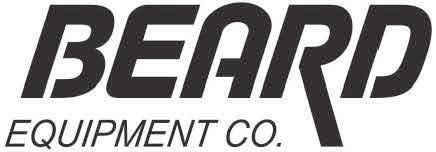
The event began with a meeting to familiarize ourselves with the legislative issues. The golf industry is a $115 billion a year business with $4.5 billion in charitable donations and needs to be seen as the economic driver that it is. Top issues are the Modernization of tax code HR-3124, PHIT Act, and the reauthorization of the National Turfgrass Research Initiative. Each participant was presented with a very detailed schedule. To schedule 203 different people from 38 states for meetings with Senators and Congressional Representatives from multiple states and districts was a feat of logistics. That evening we attended a congressional reception on Capitol Hill in the historic Kennedy Caucus Room. We had ample time to work the room, introducing ourselves and expanding our networking base. Congressman Jimmy Panetta (D-CA) and Congressman Richard Hudson (R-NC) spoke on the economic benefits golf has within their respective states and of their respect for the turfgrass industry and the work we do to provide this recreational outlet. Congressman Jimmy Panetta (DCA) and Congresswoman Claudia Tenney (R-NY) are co-sponsors of the Tax Code Modernization Bill HR-3124, which would remove golf courses from an outdated tax code which excludes golf courses from federal funding following natural disasters. I applaud these two congressional members for reaching across the aisle for the common good of our industry.
Continues on page 16



TACKLE ANY TASK
The battery-powered KMA 135 R KombiMotor has 15 optional attachments, making it the ultimate piece of outdoor power equipment.

Thursday morning was the obligatory photo opportunity on the steps of the Capitol. And, yes, I placed myself front and center. I met with my team from Kentucky, which included Superintendent Damon Hitti, (Weissinger Hills Golf Course in Shelbyville) and General Manager Susannah Miller (Lake Forest Country Club in Louisville). We determined which of us had knowledge and/or experience with the relevant legislative issues. The first meeting was in the office of Senator Rand Paul (RKY) with his senior counsel. Honestly, we were anxious at the start of the meeting; however, in just a matter of minutes the dialogue started to flow. It’s amazing how effortless it is to talk about something when you’re passionate about it. With the first meeting under our belts, we found a rhythm for the next five meetings. It was easy to find common ground with most of our hosts because of their love of the game. Thursday was a long, but productive day. A lot of walking, a lot of talking. But, when the day was over, I had a very satisfying feeling of having participated in the process.
Friday morning started early as we had to catch a bus by 6:30 for the National Mall. We gathered at the Jefferson Memorial for another photo opportunity and a few words of
recognition and thanks from GCSAA Director of Government Affairs Chana McKee. We then divided into our assigned groups. I was fortunate to be assigned to mow the grounds surrounding the Jefferson Memorial. With five others mowing this didn’t last long, so I helped plant Yoshino cherry trees and spread mulch on the banks of the tidal basin. Planting the trees was a highlight. These are trees that will be there for generations, for millions to enjoy each spring as they bloom. To have been a small part of that was special. I hope to return to DC and check on the cherry trees.
Over the course of my 31-year career, never would I have imagined that a decision I made 15 years ago to join TTA would lead to a board appointment, and then to have such an incredible opportunity to represent our association. It was a fantastic way to let our voices be heard, to share our knowledge, and promote our industry. Kevin Sunderland, GCSAA Chief Operating Officer, said it best. “If you don’t tell your own story, someone else will,” he said, “That’s why advocacy matters.”

1. What is Matrix?
• Reinforced product grown at bottom of sand based profile
• Sprigged field to insure highest percolation rates
• Ready to Play product
2. Where is it used?
• High demand athletic fields: football, soccer, baseball, softball, and rugby.
• High traffic areas: Horsetracks, goalmouths, and tournament crosswalks.


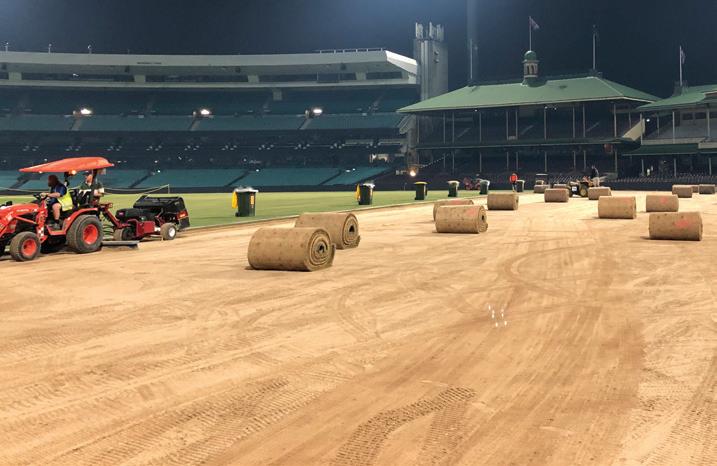


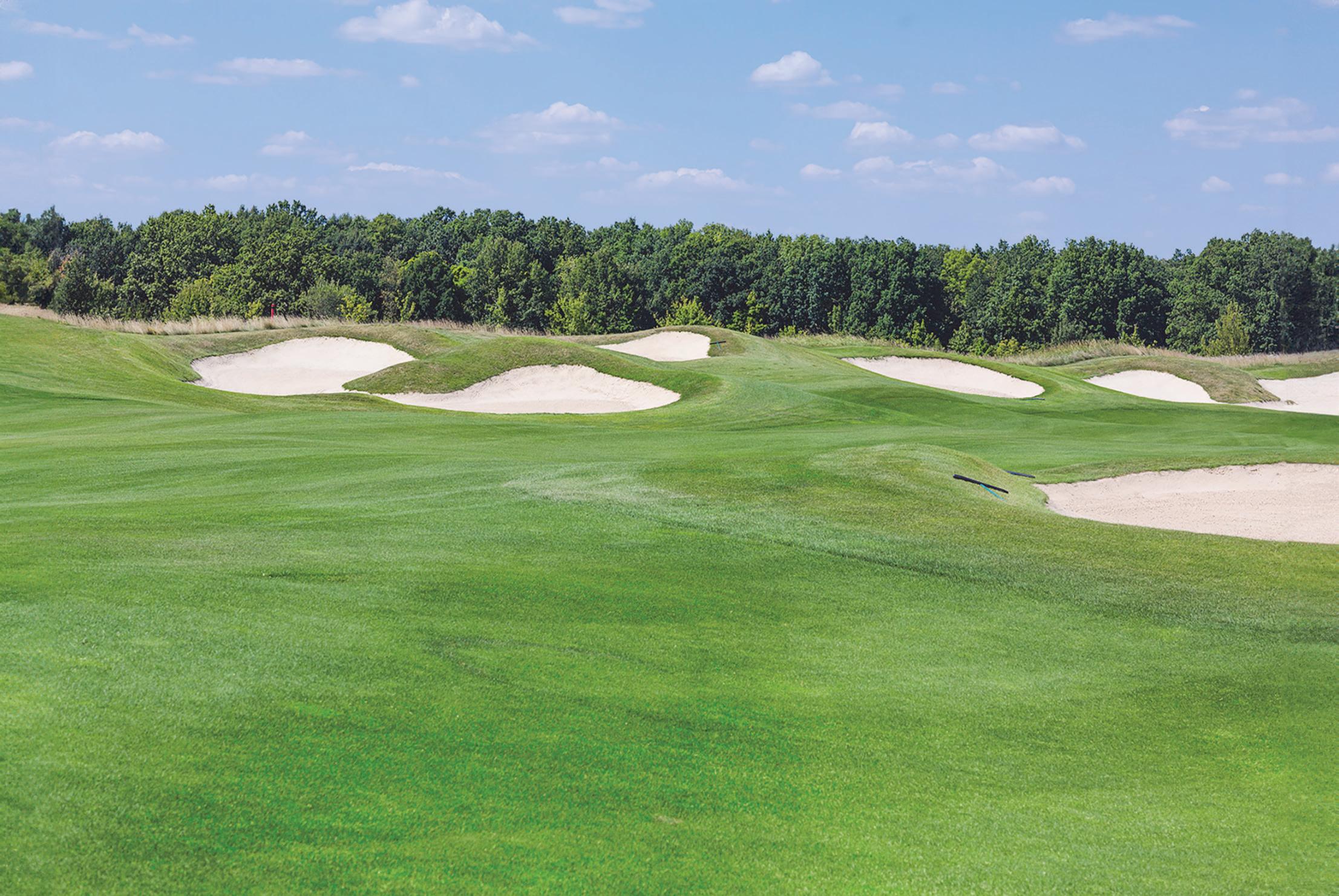

The bills and initiatives:
• US tax code HR 3124 – Modernize the tax code to exclude golf courses from a list of businesses not eligible for federal financial aid following a natural disaster.
• PHIT Act HR 1582 – Personal Health Investment Today - Would offer the option to use HSA/FSA funds on activity expenses to lower the cost of a healthy lifestyle.
• 2024 Farm Bill – National Turfgrass Research Initiative - Reauthorization and appropriation of more grant money funding for turfgrass research.
• HR 7574 – Closing the workforce gap act of 2024increase/ create a permanent cap of available H2B immigrant workers.
• HR 1477 – Freedom to Invest in Tomorrow’s Workforce - would expand 529 educational savings plans to be used on more then just post-secondary degrees (college) and would include post-secondary training and certification.




















The Tennessee Turfgrass Association serves its members in the industry through education, promotion and representation. The statements and opinions expressed herein are those of the individual authors and do not necessarily represent the views of the association, its staff, or its board of directors, Tennessee Turfgrass Magazine, or its editors. Likewise, the appearance of advertisers, or Turfgrass Association members, does not constitute an endorsement of the products or services featured in this, past or subsequent issues of this quarterly publication. Copyright © 2024 by the Tennessee Turfgrass Association. Tennessee Turfgrass is published bi-monthly. Subscriptions are complimentary to members of the Tennessee Turfgrass Association. Third-class postage is paid at Jefferson City, MO. Printed in the U.S.A. Reprints and Submissions: Tennessee Turfgrass allows reprinting of material. Permission requests should be directed to the Tennessee Turfgrass Association. We are not responsible for unsolicited freelance manuscripts and photographs. Contact the managing editor for contribution information. Advertising: For display and classified advertising rates and insertions, please contact Leading Edge Communications, LLC, 206 Bridge Street, Suite 200, Franklin, TN 37064, (615) 790-3718, Fax (615) 794-4524.
José Javier Vargas Almodóvar Research Associate II Turf & Ornamental Weed Science
The University of Tennessee 2431 Joe Johnson Drive 252 Ellington Plant Sci. Bldg. Knoxville, TN 37996 (865) 974-7379 jvargas@utk.edu tnturfgrassweeds.org @UTweedwhisperer
Greg Breeden Extension Specialist, The University of Tennessee 2431 Center Drive 252 Ellington Plant Sci. Bldg. Knoxville, TN 37996-4561 (865) 974-7208 gbreeden@utk.edu tnturfgrassweeds.org @gbreeden1
Jim Brosnan, Ph.D. Professor, The University of Tennessee Director – UT Weed Diagnostics Center 112 Plant Biotechnology Bldg. 2505 EJ Chapman Drive. Knoxville, TN 37996 Office: (865) 974-8603 tnturfgrassweeds.org weeddiagnostics.org mobileweedmanual.com @UTturfweeds
Kyley Dickson, Ph.D. Associate Director, Center for Athletic Field Safety Turfgrass Management & Physiology (865) 974-6730 kdickso1@utk.edu @DicksonTurf
Midhula Gireesh, Ph.D. Assistant Professor and Extension Specialist Department of Entomology and Plant Pathology
The University of Tennessee UT Soil, Plant and Pest Center 5201 Marchant Drive Nashville, TN 37211 mgireesh@utk.edu (615) 835-4571
Brandon Horvath, Ph.D. Associate Professor, Turfgrass Science
The University of Tennessee 252 Ellington Plant Sci. Bldg. 2431 Joe Johnson Drive Knoxville, TN 37996 (865) 974-2975
bhorvath@utk.edu turf.utk.edu @UTturfpath
Becky Bowling, Ph.D. Assistant Professor and Turfgrass Extension Specialist The University of Tennessee 112 Plant Biotechnology Bldg. 2505 E.J. Chapman Dr. Knoxville, TN 37919 (865) 974-2595 Rgrubbs5@utk.edu @TNTurfWoman
John Sorochan, Ph.D. Professor, Turfgrass Science
The University of Tennessee 2431 Joe Johnson Drive 363 Ellington Plant Sci. Bldg. Knoxville, TN 37996-4561 (865) 974-7324 sorochan@utk.edu turf.utk.edu @sorochan
John Stier, Ph.D. Associate Dean
The University of Tennessee 2621 Morgan Circle 126 Morgan Hall Knoxville, TN 37996-4561 (865) 974-7493 jstier1@utk.edu turf.utk.edu @Drjohnstier
Nar B. Ranabhat, Ph.D. Assistant Professor and Extension Plant Pathologist Department of Entomology and Plant Pathology
University of Tennessee UT Soil, Plant and Pest Center 5201 Marchant Drive, Nashville, TN, 37211 (615) 835-4572 nranabhat@utk.edu @UTplantPathoDoc

By Jay McCurdy and Michael Richard, Mississippi State University

Centipedegrass has become perhaps the most common low maintenance turfgrass species in the southeast. We can think of no other that has the breadth of utility in poor soils and areas with infrequent care. Unfortunately, its finicky response to routine maintenance means it sometimes gets “loved to death” by those responsible for its care.
Centipedegrass was first introduced in 1916 from Southeastern Asia. Seed were collected by the plant explorer Frank Nicholas Meyer (the namesake of ‘Meyer’ zoysiagrass and the ‘Meyer’ lemon) who was employed by the USDA’s Office of Seed and Plant Introduction. He drowned somewhat mysteriously near Shanghai in 1918 while exploring southeastern China via the Yangtze River.
There are at least eight species within the genus Eremochloa. Centipedegrass (Eremochloa ophiuroides) is the only one cultivated as a turfgrass species. Centipedegrass has many other common names. Chinese lawngrass or China grass denotes its origins. It is called cemetery grass due to its prevalence within cemeteries and poor man’s or lazy man’s grass because of its low maintenance requirements.
Centipedegrass is a warm-season, lime-green, medium-textured, slow growing grass found throughout the southeastern United States as low maintenance turf. It persists in humid-subtropical and tropical climates. Centipedegrass persists as far north as Tennessee and coastal Virginia; although, it is easiest to maintain where winter-time temperatures are mild. Centipedegrass is one of the least drought tolerant warm-season turf species. For this reason, it tends to do well in gulf-coastal environments due to timely rainfall during peak summertime temperatures.
Centipedegrass varieties include ‘common,’ ‘TifBlair,’ ‘Oaklawn,’ and ‘Tennessee Hardy.’ Centipedegrass spreads by aboveground stems called stolons, as well as by seed. Seed take roughly three weeks to germinate and require adequate soil temperature to do so (approximately 80 degrees). Centipedegrass is commonly propagated vegetatively as sod but may also be established by sprigs or plugs.
Centipedegrass thrives in soils of moderate to low pH (between 5.0 and 6.0). Prior to establishing any turfgrass, a soil test should be performed in order to determine soil pH. Other site considerations should include shade, wear, and expectations. Centipedegrass persists in moderate shade better than bermudagrass but not nearly as well as St. Augustinegrass. Centipedegrass has poor wear tolerance and is slow to recover from injury because of its slow growth rate. Low fertility requirements and short statured growth make centipedegrass well suited for low to no mow scenarios, but property owners expecting thoroughbred performance will be unhappy with a plow-horse trod.
Once established, nitrogen inputs should be limited to less than 2 lbs nitrogen per 1,000 ft2 per year. By contrast, this is roughly half that recommended on low maintenance bermuda and zoysia grass lawns. When using controlled release nitrogen sources, I recommend even less. In some environments, nitrogen input may not be needed every year.
Some of the most experienced centipedegrass gurus suggest a potassium supplement in the spring and fall. Some folks use foliar apps of iron to correct the bleached appearance of grass grown in soils where pH is above optimal. The darker color lasts until the leaf tissue grows enough to be mown. Humic and fulvic acids, as well as various other soil amendments, are frequently suggested though research is scant in centipedegrass.

When it comes to your lawn, you deserve more than just checked boxes. TifTuf® turfgrass not only meets all the criteria but sets new standards. With unmatched drought tolerance, superior water efficiency, and top performance in national trials, TifTuf® is the gold standard of Bermudagrass.
In just seven years, TifTuf ® has saved over 46.6 billion gallons of water across 1.6 billion square feet of installations. It’s the only Bermudagrass to top National Turfgrass Evaluation Program trials 93% of the time, far ahead of Tahoma 31 at 73%.
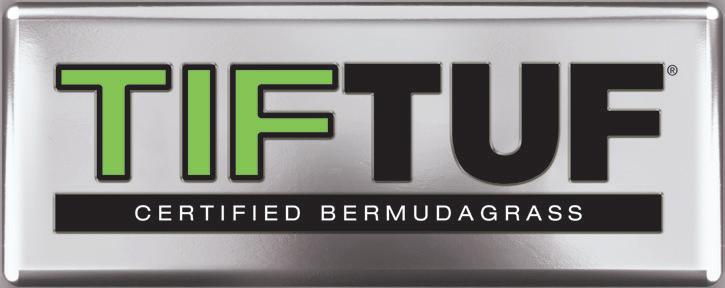
Choose the grass that doesn’t just check the boxes but redefines them. Elevate your expectations with TifTuf® . www.TheTurfgrassGroup.com
Centipedegrass does not have underground rhizomes like bermuda and zoysia grasses. When over fertilized, it becomes thatchy and prone to stress related decline. To prevent thatch, only fertilize when grass is actively growing, which in most southeastern lawns is after the third or fourth mowing event. Centipedegrass does well at a range of mowing heights (1 to 4-inches), but it does not recover well from scalping. Mowing low according to the 1/3rd rule during growing months helps promote lateral growth. Bag clippings if they accumulate or clump together and add them to your compost.
Unfortunately, centipedegrass does not conform to conventional herbicide applications as well as bermuda and zoysia grasses. Lawn care professionals who manage centipedegrass well are less governed by routine schedules and make decisions based upon
concern for plant health rather than pest control. They scout and spot treat problematic areas. They run routes that are focused on sensitive species – centipede, St. Augustine, and carpet grasses. And most importantly, they educate consumers about expectations and appropriate cultural practices.
The essence of weed-free centipedegrass is dense, healthy turf. Centipedegrass is highly susceptible to herbicide injury during fall and spring transition periods, regardless of labelling. For instance, auxin mimicking herbicides (2,4-D, MCPA, dicamba, and others) are tolerated when turf is actively growing, but during fall and spring transition, centipedgrass is susceptible to injury and slowed growth. Likewise, metsulfuron is labelled, but when applied during transition or even during mostly dormant winter conditions, injury and thinned stands are fairly common. When actively growing, phytotoxicity is transient, but during fall and spring dormancy or summer drought stress, even the slightest injury may push it over the edge.




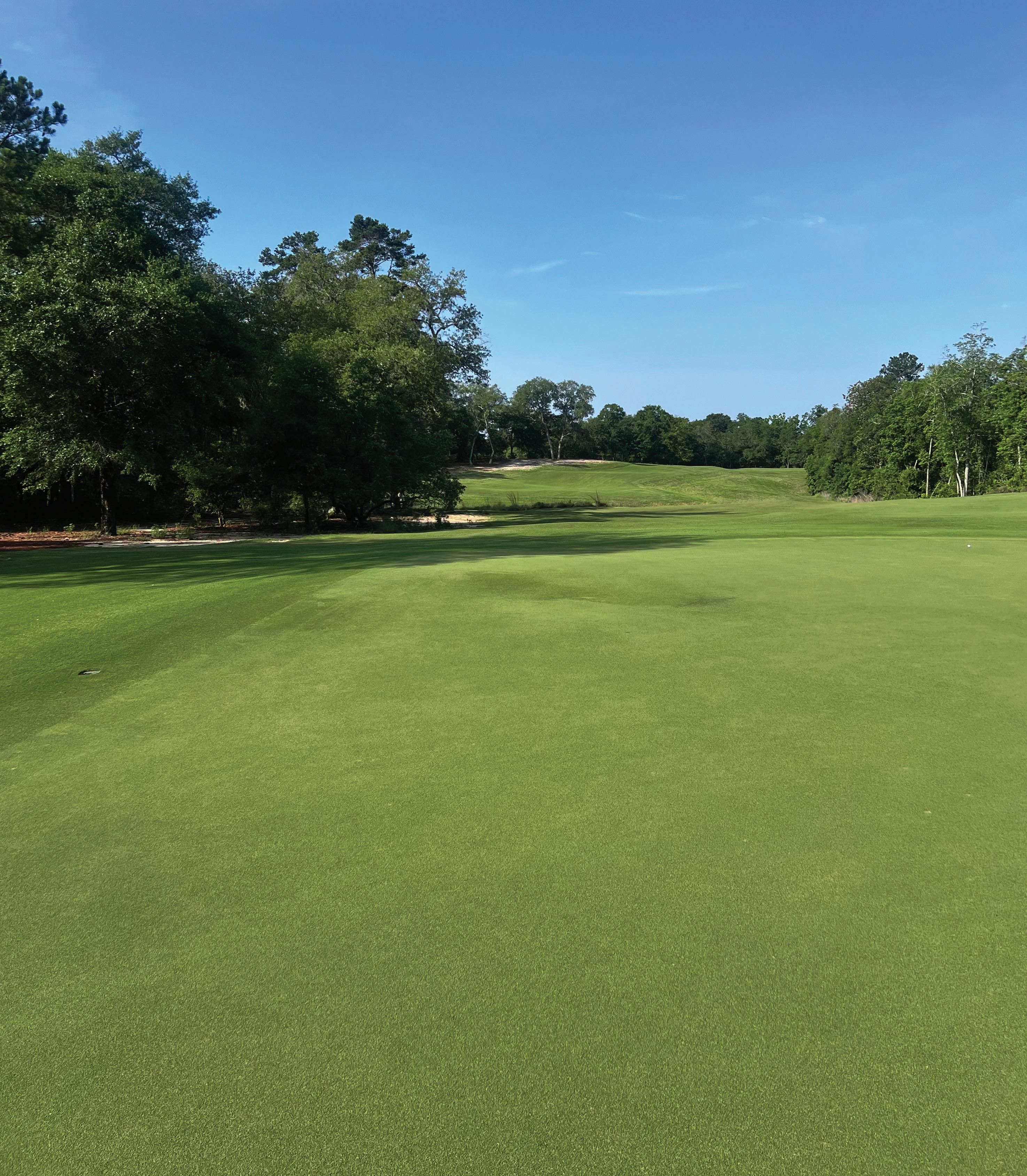

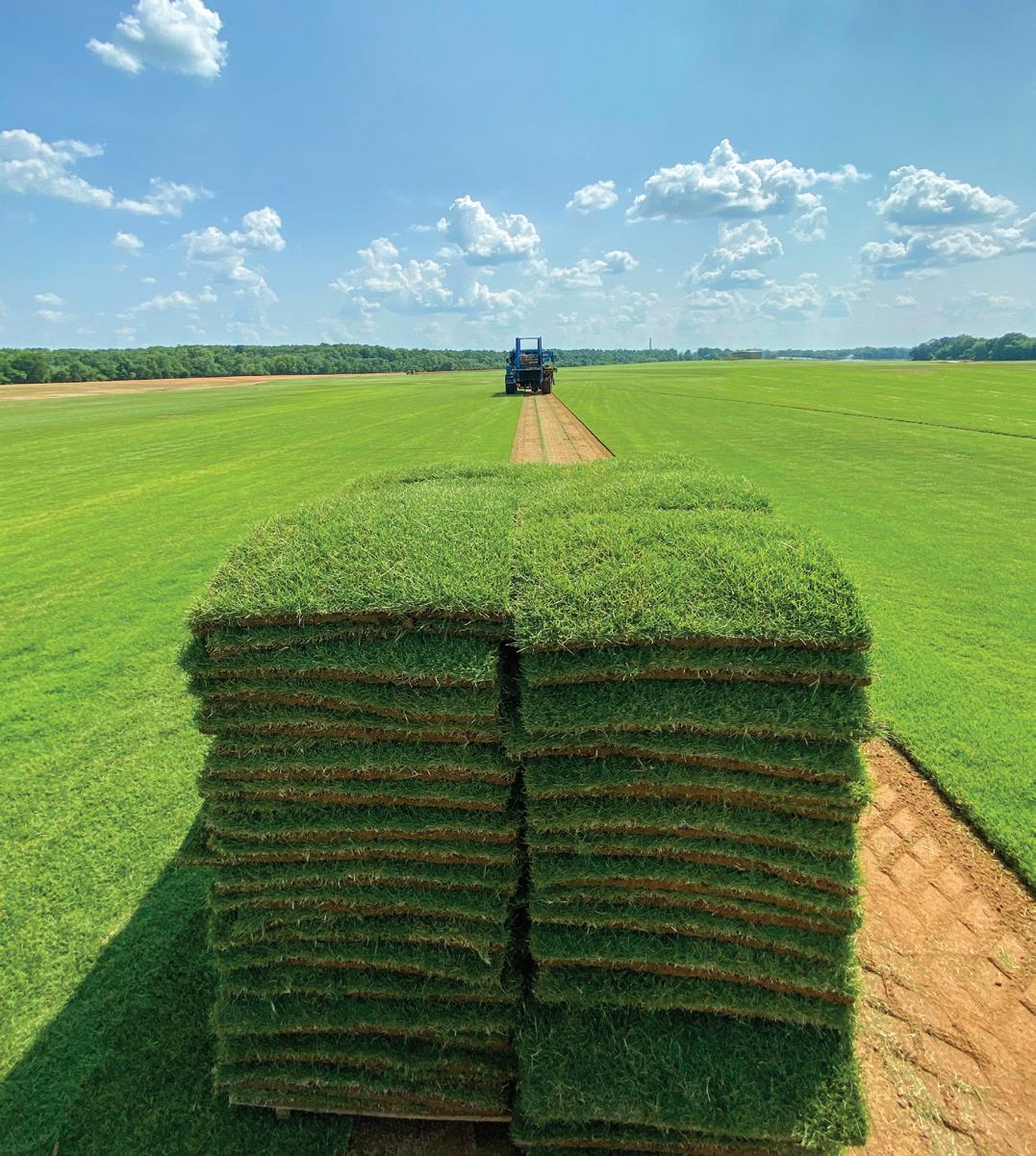

• Prioritize plant health. Manage fertility, soil pH, cultural practices, and especially thatch if you want a resilient centipedegrass lawn.
• Mow at a height that allows infrequent mowing. The higher the height of cut, generally the less frequent mowing.
• Rely upon fall preemergence herbicide applications for control of annual bluegrass and cool-season broadleaf weeds rather than winter/spring postemergence treatments. It is fairly typical to apply low rates of mitotic inhibiting herbicides (ex. Barricade, Pendulum, Dimension) in conjunction with simazine at a fall timing. Some practitioners apply reduced rates of Specticle in the Fall, but this is not advised unless dealing with extremely healthy centipedegrass. Ultimately, simazine and atrazine are the safest preemergence treatments for centipedegrass, but admittedly they lack the same spectrum of weeds controlled as many other preemergence options.
• With the exception of simazine or atrazine, we advise using decreased rates or forgoing the use of preemergence herbicides in the spring. Fly-away or looping stolons in lawns treated with mitotic-inhibiting herbicides or Specticle are typical. Gallery (isoxaben) might be another exception, as it tends to be very safe on grasses. Unfortunately, gallery lacks control of grassy weeds.
• Reduced rates of simazine and atrazine have long been standard recommendations for spring broadleaf/Poa control with the added benefit of some preemergence activity. For new customer accounts, a round-1 “clean-up” option is atrazine. Atrazine on a granular fertilizer carrier (ex. Scotts Bonus S) in spring is a standard that homeowners can do themselves.
• In general, avoid use of postemergence herbicides during spring and fall periods of static growth. Even though they’re labelled, products containing auxin mimicking herbicides (ex. 2,4-D, dicamba, mecoprop, clopyralid, and others) can be particularly problematic during periods of transition or slow growth. Herbicides are rarely the only cause of decline, but when combined with stress, such as drought or slowed recovery from winter, they too frequently result in thinned turf or stunted growth.
• When possible, spot treat postemergence herbicides rather than broadcast applying. We realize how impractical this can be, but so is re-sodding an entire yard.
Preemergence herbicides that are labelled include (but are not limited to):
Barricade and others (prodiamine)
Coastal (prodiamine, simazine, imazaquin)
Dimension and others (dithiopyr)
Gallery (isoxaben)
Gemini (prodiamine, isoxaben)
Echelon (prodiamine, sulfentrazone)
Freehand (dimethenamid, pendimethalin)
Kerb (pronamide)
Pendulum and others (pendimethalin)
Pennant Magnum (metolachlor)
Specticle Flo (indaziflam) – Not for use in sod
Surflan (oryzalin)
Tower (dimethenamid)


Aquatrols® and the turf division of Precision Laboratories™, two of the leading brands in turf management, have merged to form The Aquatrols Company. This merger brings together the most comprehensive portfolio of soil surfactant and adjuvant products in the industry.
MORE AT

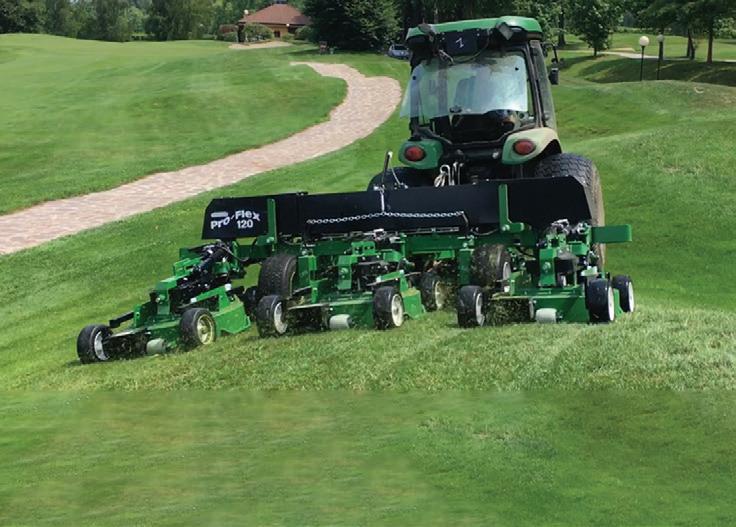

Progressive Turf builds the right mowers and rollers for any field. For over 30 years they have set and re-set the standards in commercial grade mowing equipment.
Contact your Progressive Dealer to find out why Progressive products are outstanding in any field!
Many postemergence herbicide labels limit or restrict use to periods of active growth. Several products (ex. Triplet-SF) limit application timings to dormant centipedegrass only. Our experience has been that centipedegrass green-up can be delayed even when applications are made according to label directions. Read the label and do not take risks when unnecessary. Products that are labelled include (but are not limited to):
Aatrex (atrazine)
Avenue South (penoxsulam, sulfentrazone, dicamba, 2,4-D)
Banvel (dicamba)
Basagran (bentazon)
Blindside (metsulfuron, sulfentrazone)
Celero (imazosulfuron)
Celsius (thiencarbazone methyl, iodosulfuron, dicamba)
Certainty (sulfosulfuron)
Change-Up (MCPA, fluroxypyr, dicamba)
Confront (triclopyr, clopyralid) –
Not labelled for residential use
Defendor (florasulam)
Dismiss (sulfentrazone)
Image (imazaquin)
Katana (flazasulfuron)
LockUp (penoxsulam, dicamba)
Lontrel (clopyralid) –
Not labelled for residential use.
Manor, MSM-Turf, Rometsol, and others (metsulfuron)
Princep 4L (simazine)
Pylex (topramezone) - spot treatment only
Quicksilver (carfentrazone)
Relzar (halauxifen-methyl, florasuluam) –
Centipede tolerance improved with addition of dicamba (0.12 to 0.24 lb ae/A)
Sedgehammer, ProSedge, and others (halosulfuron)
Segment (sethoxydim)
Speedzone Southern (carfentrazone, 2,4-D, mecoprop, dicamba)
Switchblade (halauxifen-methyl, fluroxypyr, dicamba)
Tenacity (mesotrione)
Trimec Southern (MCPA, 2,4-D, dicamba)
Vista and/or Spotlight (fluroxypyr)
Xonerate (amicarbazone)
Centipedegrass is tolerant of a few postemergence herbicides that are unique in warm-season turf. Only apply when turf is actively growing and is not under stress.
• Sethoxydim (Segment, Vantage) is labelled for grassy weed control at a reduced use rate. It will not control annual bluegrass or goosegrass, but it will control crabgrass with two applications roughly three weeks apart.
• The HPPD inhibitors mesotrione (Tenacity) and topramezone (Pylex) control crabgrass and goosegrass. Notice that Pylex is labelled for spot treatment only in residential centipedegrass.
• Winter-time applications of atrazine or simazine are sometimes applied for broadleaf and grassy weed control.
For whatever reason, crabgrass and goosegrass are rarely problematic in healthy centipedegrass. In our opinion, the most problematic weeds in centipedegrass are summer broadleaves that would exist regardless of spring preemergence application (ex. Virginia buttonweed, dichondra, dollarweed, common lespedeza, chamberbitter, and various sedges). Products that combine ALS inhibitors with auxin mimicking herbicides (ex. Celsius or Avenue South) or combinations of auxin mimicking herbicides (ex. Change-up, Trimec Southern, or Vista) plus low rates of metsulfuron are usually well tolerated during peak summer growth and result in fairly broad-spectrum control of broadleaf weeds. Sedgehammer, Celero, Katana, Image, Certainty, or Dismiss are all options for control of sedges.
St. Augustine and carpet grasses are frequently found in mixed stands with centipedegrass. Keep in mind that herbicide selection should account for the presence of these sensitive warm-season species. For instance, Celsius is labelled across a range of warmseason turf species, but it is a standard recommendation to control carpetgrass. Many an LCO has killed carpetgrass without knowing it was present.
Centipedegrass is susceptible to a number of pests other than weeds, including ground pearls, large patch, and nematodes. Proper pest identification is necessary in order to adequately treat these problems. Long term decline due to these or other pests may indicate that a site (or property owner) is not conducive to centipedegrass growth. Renovation and establishment of a more suitable grass species is a frequent recommendation.
In summary, use caution when applying herbicides to sensitive species, particularly centipedegrass. Prioritize plant health, and above all else, educate the consumer so that they have realistic expectations and perform cultural practices properly.







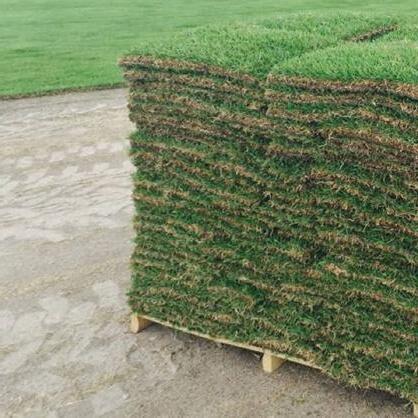

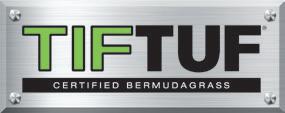

By Mikerly Joseph, Dave Han, and Scott McElroy, Auburn University
Current address of first author: University of Florida

the southeastern region of the United States, Setaria pumila and Setaria parviflora, respectively known as yellow and knotroot foxtail, are two common species infesting managed and unmanaged turfgrass, pastures, roadsides, and some cropping systems (Bryson and DeFelice, 2009; Hitchcock, 1971). Yellow and knotroot foxtail originated from Asia and North America, respectively (Dekker, 2003; Rominger, 1962a). Nevertheless, they are very similar in appearance and are frequently mistaken for each other, leading to confusion in herbicide selection (Darmency and Dekker, 2011).
The primary differences between yellow and knotroot foxtail are found in the seedhead with yellow foxtail seedheads bigger and denser with more hairs (Darmency and Dekker, 2011). Other studies found that knotroot foxtail can be differentiated from yellow by the presence of rhizomes (Wang et al., 1995). However, since these characteristics appear late during development or sometimes are not apparent at all, it is very difficult to tell the two species apart in the field (Wang et al., 1995).
Yellow and knotroot foxtail are annual and perennial weeds, respectively, with few options for effective chemical control in warm-season turfgrass. Pinoxaden is labeled in the United
States for use on bermudagrass controls of yellow foxtail post emergence (Peppers et al., 2020), but pinoxaden is not labeled to control knotroot foxtail (Peppers et al., 2020). Chlorsulfuron gave season-long control of yellow foxtail when applied at the early growth stage in Kentucky bluegrass, but it is not labeled in turfgrass (Maloy, 1985). Imazethapyr controls yellow foxtail effectively as a preemergence with no detrimental effects on grass establishment (Fry et al., 1997).
Little research has been done to gain an understanding of the chemical control of knotroot foxtail. In pastures, hexazinone alone or applied with metsulfuron + dicamba + 2,4-D, controlled knotroot foxtail by more than 70% two weeks after application, as did chlorsulfuron or nicosulfuron (Coats et al., 1999). Nicosulfuron + metsulfuron controls knotroot foxtail 70% in bermudagrass forage at the actively growing stage (Rusell, 2021).
Other herbicides could potentially control yellow and knotroot foxtail but are not currently labeled. For instance, thiencarbazone + dicamba + iodosulfuron is labeled for controlling yellow foxtail and giant foxtail but not knotroot foxtail.
The objectives of this research were to (1) evaluate the response of yellow foxtail and knotroot foxtail to several turf-

grass herbicides and (2) evaluate the rate response of yellow and knotroot foxtail to increasing rates of pinoxaden and sethoxydim and estimate the application rate at which 50% (I50) of both species was injured.
Research was conducted in 2021 and 2022 in greenhouse populations to evaluate yellow and knotroot foxtail response to different turfgrass herbicides. Two experiments were conducted at the Auburn University Weed Science greenhouse in Auburn, AL in 32/28 C (+/-1 C Day/night) conditions with an average relative humidity of 70%. Seeds of both species were harvested from a local population in Montgomery, Alabama. Seeds were cleaned and stored at 4oC prior to the experiments. Seeds were planted in flats of potting medium and were then transplanted individually at three leaves stage into 230 cm3 pots, filled with sandy soil. Treatments were applied two weeks after transplantation. After treatment, pots were not watered for approximately 24 hours to allow for adequate leaf absorption. See Figure 1 for the herbicide treatments.
Manuscript(Pinoxaden)
Manuscript(Pinoxaden) 1.345 Kg/ha (19.2 fl oz/a)
Segment (Sethoxydim) 3.15 L/ha ( 2.25 pt/a)
Segment (Sethoxydim) 5.25 L/ha (3.75 pt/a)
Celsius (Thiencarbazone+ Dicamba+lodosulfuron) 0.344 kg/ha (4.9 oz wt/a)
Sencor (Metribuzin) 0.750 Kg/ha (0.67 lb /a)
Steadfast (Nicosulfuron +Rimsulfuron) 0.052 Kg/ha (0.75 oz wt/a)
Dismiss FMC (Sulfentrazone) 0.841 Kg/ha (12 fl oz/a)
Dismiss South (Sulfentrazone +Imazethapyr) 1.016 kg/ha (14.5 fl oz/a)
Scepter (Imazaquin) 0.799 Kg/ha (11.4 oz wt/a)
untreated
The treatments were evaluated for percent weed control at 7, 21 and 28 days after application (DAA) and above ground biomass of the foxtail plants were evaluated at 28 DAA.
In greenhouse evaluation, yellow and knotroot foxtail responded differently to the selected herbicides. All the herbicides were effective on yellow foxtail with more than 85 % at 28 days after application (DAA) (Figure 2). Above-ground biomass data followed the same pattern. All the herbicides reduced yellow foxtail above-ground biomass by more than 95% compared to the nontreated at 28 DAA. Knotroot foxtail was more difficult to control in general than yellow foxtail. Sulfentrazone controlled knotroot foxtail > 90 %, which was the best treatment statistically. Similarly, metribuzin controlled knotroot foxtail 81%, imazaquin 71%, sethoxydim (high rate) 76%, and thiencarbazone + dicamba + iodosulfuron 68% control (Figure 2). All the other treatments controlled knotroot foxtail by less than 65%. Relative plant freshweight data agreed with visually estimated control data. Sulfentrazone, metribuzin, sethoxydim (high rate), thiencarbazone+dicamba+iodosu lfuron and imazaquin reduced the above ground biomass by more than 90% and nicosulfuron+rimsulfuron reduced knotroot foxtail biomass by 89%. However, pinoxaden (low and high rates) were less effective on knotroot foxtail with less than 30% biomass reduction.
This study found that yellow foxtail responded differently to herbicides than knotroot foxtail, and knotroot foxtail was more difficult to control. Based on the greenhouse studies, sulfentrazone, sethoxydim (high rate) thiencarbazone + dicamba + iodosulfuron, and metribuzin can be considered for controlling yellow and knotroot foxtail at label rates. Knotroot foxtail response was more variable
and pinoxaden should not be considered for controlling knotroot foxtail even at the maximum recommended label rate. Sethoxydim provided effective control of yellow foxtail and reduced knotroot foxtail biomass by more than 60% at the labeled rate. Responses observed in this study suggest that differentiation between yellow and knotroot foxtail is essential for predictable results with herbicides.
Bryson CT, DeFelice MS (2009) Weeds of the south Athens, GA: University of Georgia Press. Pp. 495
Coats GE, Taylor JM, Kelly ST, Helms RB, Scott TD (1999) Highway vegetation management Mississippi: Miss. Agric. and Forest. 122 p
Darmency H, Dekker J (2011) Setaria. Pages 275-291 in Kole C, ed. Wild Crop Relatives : Genomic and Breeding Resources. Clemson: Springer
Dekker J (2003) The foxtail (Setaria) speciesgroup. Weed Science 51:641-656
Dyer LM, Henry GM, McCullough PE, Belcher J, Basinger NT (2022) Knotroot Foxtail [Setaria parviflora (Poir.) Kerguélen]:“A sly fox”. Weed Technology:1-22
Fry JD, Gaussoin RE, Beran DD, Masters RA (1997) Buffalograss Establishment with Preemergence Herbicides. Hortscience 34
Hitchcock AS (1971) Manual of the grasses of the United States. New york: Dover
Kotu V, Deshpande B (2018) Data science: concepts and practice: Morgan Kaufmann
Maloy BM (1985) Selective control of perennial grasses in Kentucky 21 blue-grass (Poa pratensis L.) turf with chlorsulfuron. Master of science Iowa Iowa State University
Ogle DH, Doll JC, Wheeler P, Dinno A (2022) FSA: Fisheries Stock Analysis
Peppers JM, Gonçalves CG, McElroy JS (2020) Rate response of select grass weeds to pinoxaden. Weed Technology 34:818-823
Ritz C, Baty F, Streibig J, Streibig C, Gerhar D (2015) Dose-Response Analysis Using R. PLOS ONE 10
Rominger JM (1962) Taxonomy of Setaria (Gramineae) in North America in Press TUoI, ed. Urbana
Rusell D (2021) Widespread Foxtail Distribution Leads to Tough Management Decisions. Forages
Wang RL, Wendel JF, Dekker JH (1995) Weedy adaptation in Setaria spp II Genetic diversity and population genetic. American Journal of Botany 82:1031-1039



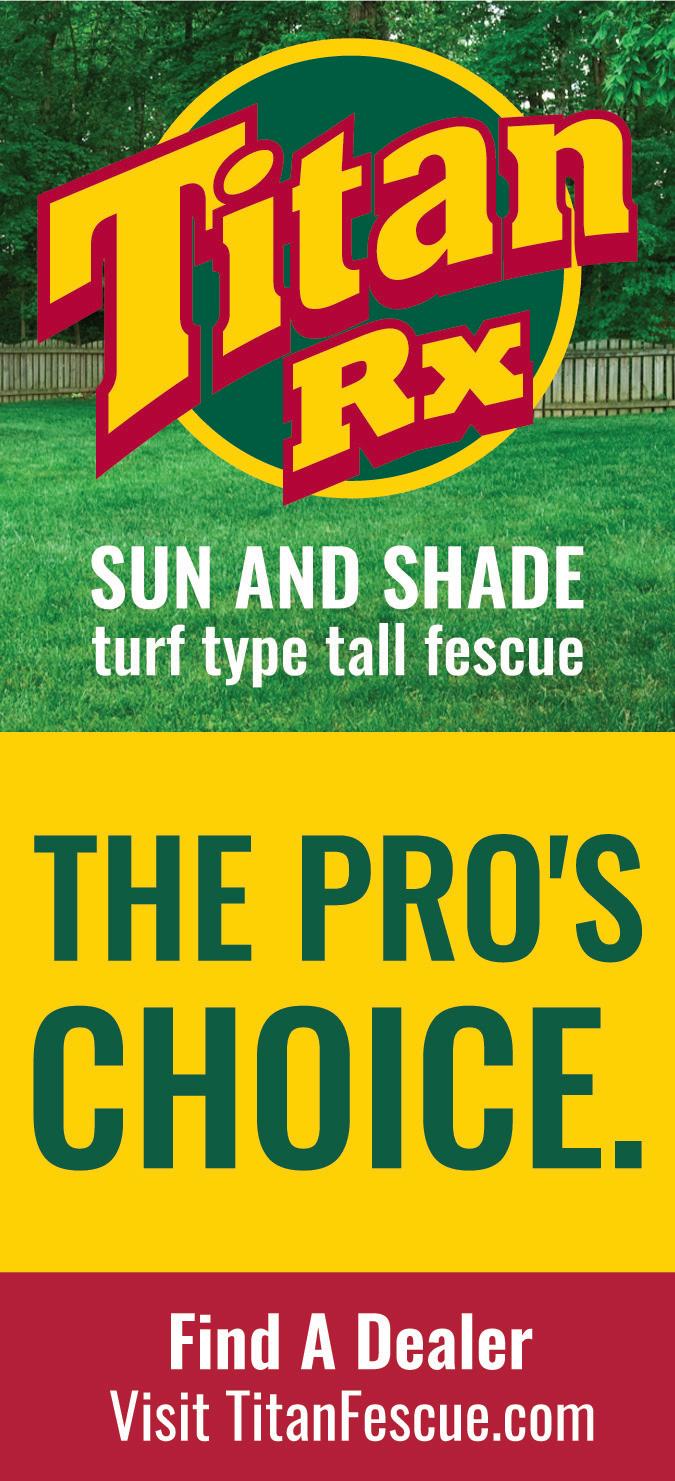
By Max Schlossberg, Ph.D. & Nathan Leiby M.S. (PSU AGRO ’21)
Unless noted, photo credits M.J. Schlossberg. No more than zero artificial intelligence resources participated in the composition of the following article.

phthalocyanine (C32H16CuN8,), also known as viridian hue, pigment green 7, and phthalocyanine green G; is a brilliant green synthetic pigment utilized in numerous artistic and industrial applications. Like many popular dyes/pigments, phthalocyanine green G is both immiscible (water-fast) and recalcitrant (durable). It is a sizable pyrrole-benzene organometallic too (Fig. 1), with a molar mass just a fuzz over 576 grams. You’ve most recently seen it in auto paint or tattoo ink but were probably first introduced while mixing ‘Fore!’ fungicide back in the 20th Century.
To those operating in the southern hemisphere, Cu phthalocyanine is the pigment responsible for the verdant hue of the warm season turfgrass you just treated with dormancy colorant. For residents of the Commonwealth who utilize a spray pattern indicator with ‘Green’ in its name, Cu II phthalocyanine is likely the ingredient indicating where your last pass starts and ends. We included the ‘likely’ qualifier because some colorant products that appear green contain blue and yellow pigment combinations, rather than Cu phthalocyanine.
Considering regional interest, editorial constraints, and our research experience, we will limit discussion of Cu phthalocyanine to spray indicator and combination products applied to actively growing turfgrass systems in season. Readers seeking guidance on dormancy colorants or paint are encouraged to consult the useful and current ‘Guide to Using Turf Colorants’ by Dr. Grady Miller and Drew Pinnix of NC State Extension (https://content.ces.ncsu. edu/guide-to-using-turf-colorants).
1.
Owing to its low mammalian toxicity and environmental risk, Civitas Pre-M1xed Turf Defense™ (Intelligro, Mississauga, ON, Canada) comprises a popular and widely-available petroleum-derived spray oil (PDSO) plus Cu II phthalocyanine liquid product for inclusion in tank mixes as an indicator dye and/or product synergist. The impetus for the latter includes reports of reduced pesticide requirements when employing Civitas in IPM programs, and recognized benefits of Cu phthalocyanine and pesticide combinations. Civitas Pre-M1xed ain’t your mom’s ‘Oh Happy Plant Bath;’ as it features proven insecticidal properties, a fungicide resistance action committee (FRAC) classification of “not,” and an Organic Materials Review Institute certification permitting employ in organic production/management or where cosmetic pesticide use is prohibited. Application of PDSO + Cu phthalocyanine products results in a coating of the plant canopy, to which leaf chlorosis has been attributed. This response has been correlated to reduced photosynthetic capacity arising from the inhibition of gas exchange. In the second year of continual treatment, repeated 17.3 fl. oz. per 1000 ft2 (M) applications of PDSO or PDSO–colorant combination product to maintained putting greens reduced creeping bentgrass canopy quality, chlorophyll content, carbon dioxide exchange and transpiration rates. Semimonthly application of Civitas Pre-M1xed Turf Defense™ (8.5 fl. oz. per M) to an annual bluegrass putting green in Oregon from Sept. to June significantly reduced canopy density on plots subjected to double-rolling treatment five days a week.

- Darren SeyboldUniv. of Tennessee Director of Sports Surface Management
“As far as cold tolerance, staying greener longer into the season, that is definitely something we noticed. If we can get less ryegrass here at the stadium which gets used once every 14 days, you know that’s a big benefit for us late in the season.”
After researching different bermudagrass varieties and looking for something that would stay greener longer in the climates of East Tennessee, the University of Tennessee selected Latitude 36® for historic Neyland Stadium. Latitude 36 is a top quality rated, cold-hardy bermudagrass developed by renowned Oklahoma State University that offers high traffic tolerance and excellent tensile strength. Latitude 36 also has a dark green color and fine texture which makes it a good choice for a collegiate sports field aesthetically and functionally.
However, studies describing ethephon-complementing, onetime, 17 fl. oz. per M application of Civitas to putting greens cohabited by creeping bentgrass and annual bluegrass proved synergistic in suppressing seedheads and did not incite a phytotoxic response. The current Civitas Turf Defense Pre-M1xed label (revised Nov. 2017) recommends an application rate between 8.5 and 17.3 fl. oz. per M, made on no less than 7-d intervals, either alone or in combination with routine tank mix ingredients.
Although not uncommon practice of golf course superintendents, little research has evaluated urea-N and PDSO–colorant combination products when foliar-fertilizing cool-season turfgrass systems. In 2015, a colonial bentgrass fairway study was conducted by Gary Nolan & Dr. Wakar Uddin at the Valentine Turfgrass Research Center. End-of-season leaf clippings were collected and analyzed for N concentration, and those originating from plots repeatedly treated by Civitas Turf Defense Pre-M1xed (8.5 oz. per M) showed significantly greater tissue N than untreated plots. Once apprised of these results, we turfgrass nutrition researchers sought to uncover the how and the why. Foliar application of liquid N fertilizer is a popular approach to ensuring golf course turfgrass nutritional sufficiency in season. For turfgrass managers
using primarily urea-N fertilizer, the N loss pathway of concern is ammonia (NH3) volatilization. As much as 11% of 0.4 lbs per M foliar urea-N applications to a golf course putting green were volatilized as NH3 within 24 h. More recent field evaluations showed between 3 and 8% of 0.15 to 0.2 lbs urea-N per M foliar applications were lost in the 24 h following golf course putting green treatment. Considering coating of the plant canopy by PDSO + Cu phthalocyanine is the mechanism by which reduced carbon dioxide exchange and transpiration rate is often attributed, the authors hypothesized Civitas inclusion may influence NH3 diffusion (volatilization) in the 0- to 48-hours following foliar fertilization of golf course fairways by urea-based N fertilizers.
Complementing semimonthly soluble N applications with 8.5 fl. oz. Civitas Pre-M1xed per M of creeping bentgrass fairways (in 1.5 gal./M carrier volume) didn’t affect 0- to 48-hour NH3 volatilization loss (Fig. 2) but significantly improved the mean fairway canopy dark green color index. Which in turn, raised some questions like ‘How?’ and ‘Why?’ and ‘What is the fate of these combination products?’ The open-access (free) paper describing all specific aspects of our fairway research is available at http://www.mdpi.com/2076-3298/10/10/176



HYDRA-PHITE 0-0-31
One of the purest liquids on the market, Hydra-Phite is a highly concentrated potassium phosphite reacted under strict temperature and quality control for enhanced compatibility and performance. Designed to mobilize in the plant, Hydra-Phite works rapidly to correct deficiencies, enhance plant and root development and improve resistance to environmental factors which favor disease development. Along with enhanced resistance to stress, Hydra-Phite is extremely systemic, rapidly transporting through phloem and xylem to areas of deficiencies or need
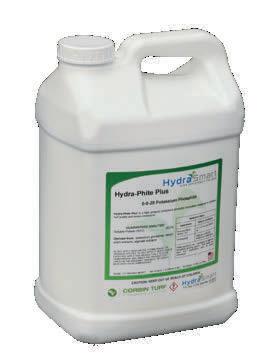
HYDRA-PHITE PLUS 0-0-28
Hydra-Phite Plus is a highly concentrated potassium phosphite containing proprietary bio-stimulant technology derived from desert plant extracts to increase plant strength and growth. In addition, the SAR (Systemic Acquired Resistance) elicitors increase plant vigor and trigger plant defense responses making the turf stronger even during the most stressful periods of the season. Hydra-Phite Plus uses this highly synergistic combination of phosphite, desert plant extracts, and SAR elicitors to produce a natural resistance to plant stress while enhancing turf quality.
The companies that developed and introduced Civitas, PetroCanada and Intelligro, have proven committed and steadfast in their support of university research. Yet there remains little insight into how the spray oil and Cu phthalocyanine components interact with the living turfgrass canopy over time from application and what their ultimate fates are. These same questions arose in the co-author’s thesis research on putting greens (Fig. 3): Is all Civitas applied absorbed, or bound to vegetation? How does carrier volume affect Civitas distribution throughout the canopy?
And perhaps the most poignant of questions: Could phthalocyanine green absorption by plant tissue cause the darker green color and greater vigor observed of the treated plots? While support for this potential mechanism exists, readers may not consider its origin objectively neutral. But we’re not implicating ‘X’ or ‘Meta’ or whatever the leading, zero-cost source of ‘opinions that fas-
cinate’ currently is. Rather, a national company’s online technical data sheet that claims their unique pigment additive ‘stimulates the plant’s natural metabolism and can improve turf color, density, vigor, consistency and strength, from the inside out. Unlike dyes and paints, this unique pigment additive is absorbed into the plant for longer lasting affects (sic).’
Regarding our 2019 – 20 research, analysis of the fairway clipping yield (shoot growth) data identified significant spray treatment effects. Specifically, in the second half of the 2019 and 2020 growing seasons, the top statistical grouping for mean clipping yield consisted of all Civitas-containing treatments. This was curious, but like the above technical data sheet claims, not readily refutable — since the literature lacked reports on the mass Cu phthalocyanine and/or spray oil expected to remain on turfgrass canopies by time from spray treatment.

As a proxy, mass retention of an 8.5 oz. per M Civitas Pre-M1xed Turf Defense application to dry clippings within a polystyrene tray was measured <1 and 1440 minutes following spray application. Approximately 1.2% of the initially applied spray remained as dry solids on the leaf tissue one day (1440 minutes) following. Considering the 0.86 g/mL specific gravity of Civitas Pre-M1xed, and confirming the water component of the spray evaporated (per negative controls), the data indicate 0.006 lbs of solid Civitas residue would be expected to remain on 1000 ft2 of canopy one day following the described spray treatment. This mass was significantly less than the observed difference between clipping yields collected from Civitas- vs. un-treated plots in the second half of either growing season.
A national company (different from the one quoted above) markets its premium pigment additive with claims ‘it provides natural green turf color for up to one month and reflects potentially harmful near infrared (NIR) light, which may improve turfgrass quality and vigor.’ Getting back to our 2019–20 research, we definitely observed improved turfgrass color and vigor of Civitas-treated plots. But the frequently collected fairway canopy reflectance data showed Civitas treatment reflected significantly less NIR (760- or 810-nm) than equally N-fertilized or untreated bentgrass over several 10-d post-application periods.
So how else could Cu phthalocyanine foster increased canopy color and shoot growth? The product label of a different (third) national company claims it is an advanced colorant formulation that resists the harsh effects associated with long periods of high temperature and intense UV light exposure.







Now this follows results of research published in 2004 describing treatment, UV-B (290-320 nm) exposure, and assessment of Kentucky bluegrass sod health. However, a suite of greenhouse and field research conducted on various turfgrass systems in Virginia from 2014–15 evaluated low rates of Civitas Pre-M1xed and two other commercial Cu phthalocyanine spray pattern indicators. Canopy spectroradiometer readings collected 1 day after treatment showed significantly less reflection of UV-A radiation (320–400 nm) than from untreated plots.
So perhaps, but how else? Well you’ve surely noticed the only phthalocyanine green containing product we’ve mentioned by name is Civitas Pre-M1xed. This seemed prudent given Civitas is the only phthalocyanine green containing product our lab has evaluated at The Pennsylvania State University since 2018. Again, Civitas Pre-M1xed didn’t affect NH3 volatilization in the two days following application at an 8.5 fl. oz. per M rate ….but did foster increased mean canopy color and shoot growth in the second half of each study year. This may be an occasion when evaluation of additional data helps us link cause to effect, i.e., N content of clipping yields and fertilizer N recovery (FNR).
Nitrogen analysis of homogenous Civitas Pre-M1xed reveals a mean N concentration of 1.0%. Considering healthy bentgrass leaf clippings collected from our Declaration fairway ranged from 3.27 to 5.99% N by mass, any of the 0.006 lbs Civitas residue we determined to remain in 1000 ft2 of canopy, one day following application, would be more likely to dilute leaf N content than increase it. Yet, on average, clippings collected from Civitas and
N fertilizer-treated plots contained 0.22% greater absolute leaf N than plots treated by N-fertilizer alone. Thus, while systematic complementation of foliar N fertilizer by Civitas Pre-M1xed did not directly influence volatilization loss, cumulative reapplications somehow enhanced N availability.
The origin of the 1.0% N in Civitas is primarily the Cu II phthalocyanine pigment (C32H16CuN8). Having a reference 19.5% N content, this organic N is neither immediately assimilable by plants nor disclosed on the label. However, the estimated N load from Cu II phthalocyanine delivered in each 8.5 fl. oz. application of Civitas Pre-M1xed equals 0.005 lbs N per M. In the last five of the six yield collections, Civitas complementation enhanced fertilizer N recovery (FNR) by a margin exceeding the Civitas N load delivered in the most recent application. However, only in the last two yield collections did Civitas complementation enhance FNR by a margin exceeding the sum of the most recent Civitas N load and the calculated least significant difference (LSD 5%). Meanwhile, cumulative Civitas N load by the end of the 2020 season totaled nearly 0.1 lbs N per M, only 3.3% of the total fertilizer N applied over both growing seasons.
So where does that leave us…in simple terms? Our data indicate Civitas applied to turfgrass isn’t entirely removed with clippings. Rather, irrigation/rain, traversing equipment, foot traffic, canopy maturation, and mowing ultimately translocate a significant fraction of Civitas applications to the underlying soil/rootzone. The Cu phthalocyanine component (pigment) of Civitas, or any containing colorant product, is a big organic molecule with a C:N ratio of 3.4!! For those of you who have taken TURF 435, you know that’s a rich organic amendment. Yet this Civitas N accounts for less than half the 8.7% greater mean FNR demonstrated by Civitas-complemented treatments to the creeping bentgrass fairway.

Meanwhile you’re probably wondering how is this durable, recalcitrant, pyrrole-benzene decomposed and mineralized in soil? Well, if we depended only on agronomic and soil science journals, a supporting answer would prove challenging. Yet, industrial and environmental engineers have conducted extensive research on bioremediation of industrial waste from the textiles industry. In aerobic environments, wood-rot fungi have proven extraordinarily proficient at degrading synthetic dyes. For the fungi Irpex lacteus and Pleurotus ostreatus, soil Cu phthalocyanine might as well be a juicy meatball or tofu curd (pick the analogy that best suits your dietary preference). Given adequate moisture, Cu phthalocyanine carbon is promptly assimilated and its organic N mineralized, both at a rate directly related to temperature and soil oxygen content. This is likely why the magnitude of Civitas-induced N nutrition was greatest in late summer; it was when soil temperatures were high and accumulated soil Cu phthalocyanine greatest.
We are currently conducting lab incubations of soil-incorporated Cu phthalocyanine to determine rate and degree of microbial degradation and N mineralization. Thus, there is more to follow, but the plant response observed in our field research does not make application of spray oil and Cu phthalocyanine combination product any less enigmatic of a cultural practice. We’re identifying a component of influence for now, and that is Cu phthalocyanine may be the greenest slow-release N fertilizer you’ve never heard of. So, the next time you wonder what it is about repeated applications of Cu phthalocyanine-containing product(s) that make(s) your turfgrass appear vigorous and healthy (Fig. 4), remember Cu phthalocyanine’s ~20% N content. It may just have something to do with it!











